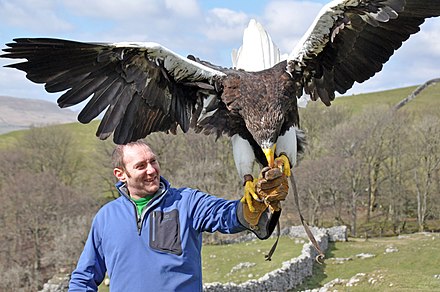Steller’s Sea Eagles (Haliaeetus pelagicus) are known to be opportunistic predators, and their diet includes a variety of prey, including other birds. These majestic birds of prey are found in the coastal regions of northeastern Asia, primarily in Russia and Japan, and their feeding habits have been the subject of extensive research.
Steller’s Sea Eagles and Their Prey
Steller’s Sea Eagles are primarily fish-eaters, with a diet that consists mainly of salmon, trout, and other large fish species. However, they have also been observed feeding on a variety of other prey, including:
- Waterfowl (ducks, geese, and swans)
- Seabirds (gulls, terns, and cormorants)
- Small mammals (hares, rabbits, and rodents)
- Carrion (dead animals)
The extent to which Steller’s Sea Eagles prey on other birds can vary depending on the region and the availability of their primary food sources. In some areas, such as the Kuril Islands and the Kamchatka Peninsula in Russia, these eagles have been known to actively hunt and consume other seabirds, including gulls, terns, and even smaller eagles.
Kleptoparasitism: Stealing Food from Other Birds
 Image source: stellers sea eagle
Image source: stellers sea eagle
In addition to directly hunting and consuming other birds, Steller’s Sea Eagles are also known to engage in a behavior called kleptoparasitism. This involves stealing food from other birds, particularly during periods of food abundance or in large feeding aggregations.
Immature Steller’s Sea Eagles are more likely to engage in kleptoparasitism than adult birds, as they may not have developed the hunting skills or experience to consistently catch their own prey. However, adult Steller’s Sea Eagles can also benefit from this behavior, as their bold coloration and large size can intimidate other birds and allow them to successfully steal their food.
Aggressive Interactions with Other Birds
Steller’s Sea Eagles are not only predators but also fierce competitors for food resources. They have been observed engaging in aggressive interactions with other bird species, such as Golden Eagles, over access to food sources.
These interactions can result in the displacement of one bird by another, with the larger and more assertive Steller’s Sea Eagle often emerging victorious. This behavior can be particularly intense during periods of food scarcity, when competition for resources is heightened.
Breeding and Nesting Habits
Steller’s Sea Eagles are known to breed only in the far eastern regions of Russia, along the coasts and surrounding islands of the Sea of Okhotsk and Bering Sea. The Kamchatka Peninsula is a particularly important breeding ground for these birds.
During the breeding season, Steller’s Sea Eagles construct large nests, often reusing and adding to the same nest year after year. These nests can be up to 8 feet (2.5 m) in diameter and can weigh several hundred pounds. The eagles typically lay 1-3 eggs, which are incubated for around 38-45 days.
Migration and Wintering Grounds
Each winter, many Steller’s Sea Eagles migrate from their breeding grounds to Japan, with some individuals reaching as far as Korea or even farther afield. These migratory movements are believed to be driven by the need to find more abundant food sources during the colder months.
In Japan, Steller’s Sea Eagles can be observed feeding on a variety of prey, including cod, ducks, gulls, and other seabirds. Their presence in these wintering grounds has made them a popular subject of birdwatching and ecotourism activities.
Conclusion
Steller’s Sea Eagles are remarkable birds of prey that have adapted to thrive in the harsh coastal environments of northeastern Asia. While their primary diet consists of fish, they have also been observed preying on other birds, engaging in kleptoparasitism, and competing aggressively with other avian species for food resources. Understanding the feeding habits and behaviors of these majestic eagles is crucial for their conservation and the preservation of the delicate ecosystems they inhabit.
References:
- Steller’s Sea Eagle | National Geographic. (n.d.). Retrieved April 23, 2024, from https://www.nationalgeographic.com/animals/birds/facts/stellers-eagle/
- Stellers Sea Eagle – Haliaeetus pelagicus – Carnivora. (n.d.). Retrieved April 23, 2024, from https://carnivora.net/stellers-sea-eagle-haliaeetus-pelagicus-t2363.html
- Steller’s Sea Eagle – Wikipedia. (n.d.). Retrieved April 23, 2024, from https://en.wikipedia.org/wiki/Steller%27s_sea_eagle

